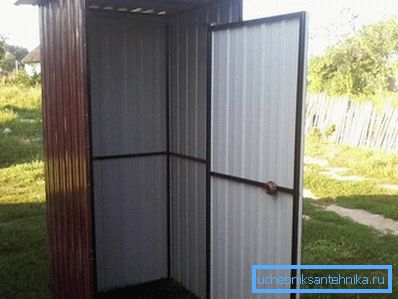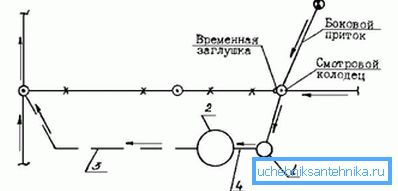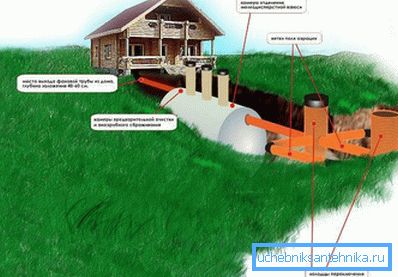Temporary sewage
As a rule, the need for temporary sewage most often occurs:
- during the construction of an object (this is not one day, and there are usually several people);
- in the house in which they already live, but the issue of central sewage has not yet been resolved;
- on the summer cottage, where a high-quality septic tank "must be done, but now there is no time."
What does temporary mean? This suggests that it will be used only for some time, and then dismantled. Hence, the cost should be a minimum.
In different situations, the device amenities can be carried out in different ways, too, so it is useful to consider each case separately.
At the construction site
The building is under construction, albeit small, but the brigade of craftsmen is involved. During the whole period of work, people need the convenience of a certain nature: to wash after a busy day, go to the toilet.
In such cases, developers are quite able to afford to dig a small pit, put concrete rings in there and cover it all with a slab with a hatch. It is clear that on the construction site all this should correspond to the SNiP and SanPiN.

Get a septic tank. A sewer pipe running from a small toilet room to which light and water should be connected will crash into it.
It would be possible to place a bio-toilet, but then the meaning of cheapness is lost, because it constantly needs to be serviced.

Another option often used on construction sites is a cesspool, right above which is a toilet stall.
On the territory of the cottage
Visiting the country site, summer residents outside a smaller degree need the blessings of a civilization. Or at least in a place that will temporarily serve them as a toilet.

As for drainage, everything is simpler: just pour the water into a small pit or trench along the road (this applies to rare visits and clean water without harmful impurities).
But what to do if at the cottage there is a house in which weekends are held with the whole family, and even with friends?
If the house has a shower and toilet, the cumulative septic tank, installed near the road (to be serviced by an exhaust truck), will do its job well. Given that this is a cumulative septic tank, and the smell from it will still emanate, it is not necessary to locate the septic tank close to its neighbors.

As for the country house, which is rarely visited, and there is no toilet in the house, a wooden cabin above the pit would be enough. Hands can be washed over the sink, located close to the toilet house and connected to the pit with a pipe of small diameter.
In a private household
When moving to a private home is becoming increasingly necessary. There is water in the house, the internal wiring of the sewage system is also completed, and at the exit a pipe sticking out of the foundation. Where to direct drains from the house, if the central sewerage is only in the project, and you need to live today?
Summer option with a wooden cabin, as in a private house, will not be enough.
Having carefully studied all regulatory documents, you need to hire a tractor driver with your equipment. Ideally, it is worth asking for official permission to install a septic tank.
In a suitable place, guided by the project, a hole is pulled out into which it will be necessary to lower concrete rings. The bottom, on which they will be installed, must be concreted, the joints of the rings are tight.
Such a drive for a temporary sewage residential building is the only correct option. After receiving the project for a permanent sewage system, it can be used (if under the project it is a septic tank with natural filtration, the temporary option will serve as the first camera in the system) or dismantled. You can also fill the pit, after pumping out the waste.

Tip! Temporary sewage system is unprofitable in all respects, and it is better to think over the wastewater discharge system in advance, if possible.